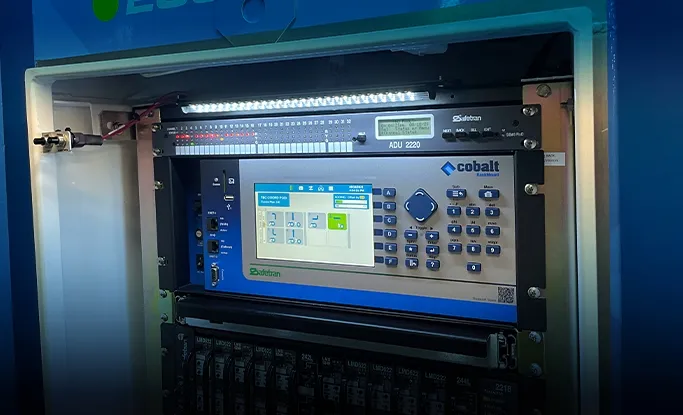The City of Pueblo, Colorado, has chosen Autoscope RackVision Pro 2 (RVP2), from Econolite and Image Sensing Systems, to enhance video detection performance at intersections.
Autoscope RVP2 with software version 10.5.0 will enable Pueblo to achieve the upgrade cost effectively by eliminating the need to replace current cameras, as well as using one RVP2 to operate two cameras. The City has ordered 39 RVP2 systems to be installed this year.
The City of Pueblo was an early adopter of video detection technol
June 14, 2016
Read time: 2 mins

The City of Pueblo, Colorado, has chosen Autoscope RackVision Pro 2 (RVP2), from 1763 Econolite and 6626 Image Sensing Systems, to enhance video detection performance at intersections.
Autoscope RVP2 with software version 10.5.0 will enable Pueblo to achieve the upgrade cost effectively by eliminating the need to replace current cameras, as well as using one RVP2 to operate two cameras. The City has ordered 39 RVP2 systems to be installed this year.
The City of Pueblo was an early adopter of video detection technology, installing video sensors at its actuated intersections starting in 2000. This helped Pueblo overcome the limitations of other detection technologies that are affected by extreme seasonal conditions, such as snow and freeze/thaw cycles. In March 2016, the City of Pueblo began to install Autoscope RVP2 and saw immediate improvement in detection performance and accuracy. The Autoscope RVP2 is a Machine Vision Processor (MVP) designed to enable vehicle detection and signal actuation in a typical traffic cabinet. The RVP2 detector card is easy to install and works with other camera brands. Mouse & Monitor functionality quickly sets up intersection detection without a laptop. Autoscope Software Release Version 10.5.0 with Cyclescope improves detection and bicycle differentiation accuracy, including enhanced performance under very complex lighting conditions.
Version 10.5.0 is compatible with all existing Autoscope Solo Terra, Rackvision Terra, Encore and Duo detection systems. In addition to supporting Windows 8, Autoscope 10.5.0 offers remote communications capabilities to RVP1 and RVP2.
Autoscope RVP2 with software version 10.5.0 will enable Pueblo to achieve the upgrade cost effectively by eliminating the need to replace current cameras, as well as using one RVP2 to operate two cameras. The City has ordered 39 RVP2 systems to be installed this year.
The City of Pueblo was an early adopter of video detection technology, installing video sensors at its actuated intersections starting in 2000. This helped Pueblo overcome the limitations of other detection technologies that are affected by extreme seasonal conditions, such as snow and freeze/thaw cycles. In March 2016, the City of Pueblo began to install Autoscope RVP2 and saw immediate improvement in detection performance and accuracy. The Autoscope RVP2 is a Machine Vision Processor (MVP) designed to enable vehicle detection and signal actuation in a typical traffic cabinet. The RVP2 detector card is easy to install and works with other camera brands. Mouse & Monitor functionality quickly sets up intersection detection without a laptop. Autoscope Software Release Version 10.5.0 with Cyclescope improves detection and bicycle differentiation accuracy, including enhanced performance under very complex lighting conditions.
Version 10.5.0 is compatible with all existing Autoscope Solo Terra, Rackvision Terra, Encore and Duo detection systems. In addition to supporting Windows 8, Autoscope 10.5.0 offers remote communications capabilities to RVP1 and RVP2.










